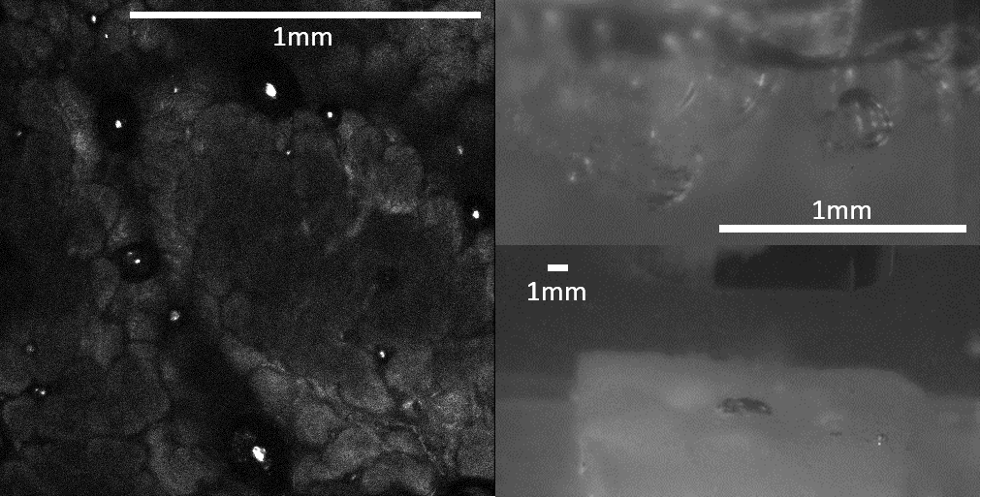Sonophoresis
Cavitation plays a key role in new wound treatments that are based on sonophoresis (ultrasound-based drug delivery) involving a viscous fluid.

Ultrasound treatment can enhance the interpenetration between the skin and an adhesive viscous fluid composed of long polymer chains (e.g. chitosan) serving as a binding matrix, thus enhancing on-demand the adhesion of an additional layer (e.g. wound dressing, transdermal patch) to the skin. Behind this is a phenomenon called sonophoresis. Within this project we aim at identifying the essential role of cavitation in this mechanism. We tackle this through fundamental investigations of the physics of cavitation bubble clouds interacting with surfaces in viscous fluids. The work is done in collaboration with the external page Lab of Biomaterials Engineering at McGill University, Canada.